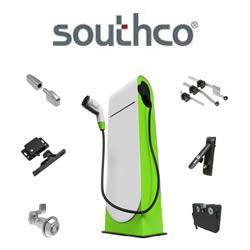EEI has compiled the following top 10 cooking tips for making sure that the electric bill this holiday season looks as good as the roast.
Energy Saving Tips in the Kitchen
The Edison Electric Institute | The Edison Electric Institute
| EEI has compiled the following top 10 cooking tips for making sure that the electric bill this holiday season looks as good as the roast. |
| Energy Saving Tips in the Kitchen |
|
The Edison Electric Institute (EEI) www.getenergyactive.org |
|
Holidays are the time for giving thanks and for cooking. Although the nation's electric companies cannot help you become a better cook, they can help you get more value from every dollar you spend on electricity. And that is something to be very thankful for indeed.
Electric companies have encouraged their customers to use electricity more efficiently since the early 1970s, according to Edison Electric Institute (EEI). These programs and services have made a difference. Between 1989 and last year, electric company programs have helped customers save almost 800 billion kilowatt hours of electricity-enough to power almost 74 million average-size U.S. homes for one year. "It's important to use electricity wisely all-year round," said Diane Munns, EEI's Executive Director, Retail Energy Services. "But during the holiday season it becomes especially significant. More people are at home, using more appliances and electronics. This creates added demand for electricity." EEI has compiled the following top 10 cooking tips for making sure that the electric bill this holiday season looks as good as the roast:
For more energy-saving tips, as well as information on electricity and electric companies, please visit www.getenergyactive.org. The Edison Electric Institute (EEI) is the association of U.S. shareholder-owned electric companies. Our members serve 95 percent of the ultimate customers in the shareholder-owned segment of the industry, and represent approximately 70 percent of the U.S. electric power industry. We also have more than 65 International electric companies as Affiliate members, and more than 170 industry suppliers and related organizations as Associate members. |
|
The content & opinions in this article are the author’s and do not necessarily represent the views of AltEnergyMag
Comments (0)
This post does not have any comments. Be the first to leave a comment below.
Featured Product

